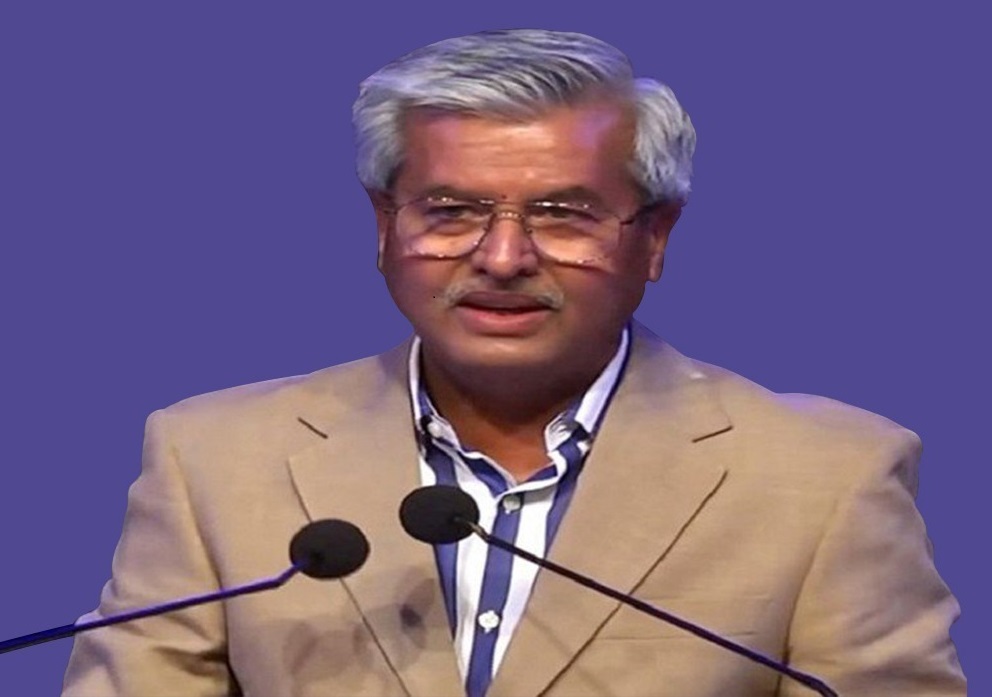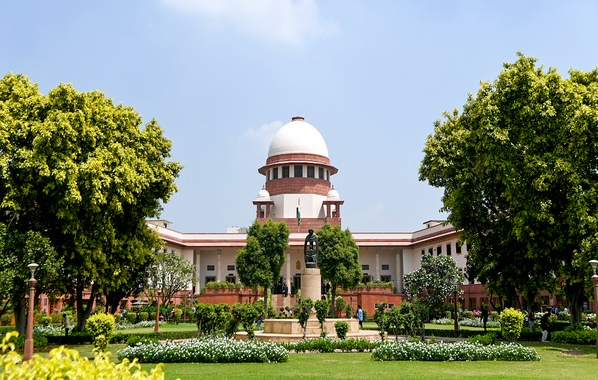
Is unmarried woman having children through surrogacy against Indian society, SC seeks Centre opinion
The Supreme Court on December 5 questioned whether a single, unmarried woman having a child through surrogacy is an “accepted norm” in Indian society.
“A single woman bearing a child is an exception and not a rule in Indian society because our society says to have children within marriage. A single woman bearing a child is outside marriage… That is not the accepted norm of Indian society,” Supreme Court judge B.V. Nagarathna orally observed.
The Bench, also comprising Justice Ujjal Bhuyan, was hearing a petition filed by a 38-year-old single and unmarried woman to become a mother through surrogacy.
The petitioner, represented by senior advocate Saurabh Kirpal, said she was “heavily diabetic” and pregnancy would pose a grave risk to her.
“Even an unmarried woman has the right to have a child,” Mr. Kirpal submitted.
The Surrogacy (Regulation) Act, 2021 allows a widow, a divorced woman between the age of 35 and 45 years, and an infertile couple to avail the benefit of surrogacy.
Mr. Kirpal said the law only banned commercial surrogacy. The purpose of the petitioner was obviously not towards that end. Limiting the right to become a mother and discriminating against a woman on the basis of her status of marriage was discriminatory and violative of her fundamental rights to equality and life under Articles 14 and 21 of the Constitution.
Justice Nagarathna said the Parliament had recognised the “potential” of a widow or a divorcee, who had gone through marriage and was struck by the “misfortune” of losing her partner through death or divorce, to have a child through surrogacy.
The petitioner’s side argued that it was not their “misfortune” which led the Parliament to allow divorcees and widows to have children through surrogacy. They argued that the exclusion of unmarried women boiled down to “patriarchal stigma” against them.
Justice Nagarathna said the law has made marriage a basis of classification, and not discrimination.
The judge said married and unmarried woman enjoy the same status and rights as far as termination of pregnancy was concerned. They were treated on par even in the case of adoption.
“But here we are concerned whether single women can have children through surrogacy when the Parliament has not permitted it… Should this court say unmarried women can go for surrogacy?” Justice Nagarathna said.
“Society may not be used to having a single woman bear children, but is that a reason to deny them the right? A multitude of women choose not to marry, some do not get married not because they wish to… Their choices have to be respected. We cannot force them to get married to have a child,” Mr. Kirpal submitted.
The petitioner’s lawyers said she had frozen her eggs in December 2023.
Additional Solicitor General Aishwarya Bhati, for the Centre, said unmarried women could undergo pregnancy through assisted reproductive technologies (ART).
“But then she would have to undergo pregnancy,” Mr. Kirpal said.
“We have a conundrum here. How many ART procedures have happened in India for unmarried women?” Justice Nagarathna asked the Centre.
The judge said “we are keeping in mind the pulse of Indian society”. Mr. Kirpal responded that the court should “keep in mind the pulse of the Indian Constitution”. The court issued notice to the Centre.
Source: The Hindu

Sensitive cases shifted from one bench to other, senior advocate Dushyant Dave alleges in open letter to CJI
Former president of Supreme Court Bar Association and senior advocate Dushyant Dave on December 6 wrote an open letter to Chief Justice of India DY Chandrachud expressing his “anguish” on “sensitive” cases being taken away from specific benches and judges.
Cases, instead of remaining with the lead judge on a Bench, were listed before the associate judge when the latter starts heading a new Bench, which he said, is in clear violation of the Supreme Court Rules and the Handbook on Practice and Procedure of the Court which govern listing of cases. Most of these cases, Dave noted, were of matters pertaining to human rights, the functioning of constitutional institutions, democracy, freedom of speech etc.
“I have personally come across a number of cases listed before various Hon’ble Benches upon first listing and/ or in which notice have been issued, being taken away from those Hon’ble Benches and listed before other Hon’ble Benches. Despite first coram being available the matters are being listed before Hon’ble Benches in which second coram presides,” Dave wrote in the letter.
He further specifically mentioned that matters listed before Court No. 2, 4, 6, 7 amongst others have been shifted out and listed before other Benches, which is in clear violation of the Supreme Court Rules.
Curiously, the Seniority of the first coram is also being ignored in doing so, he said. “Our attention is also been drawn by esteemed Colleagues at the Bar, Seniors, and Advocates on Record (AoRs), about various cases in which they have appeared in the first instance on numerous occasions, later the matters being listed before different Benches,” the letter stated.
While Dave refused to enumerate further on these matters as many of them are pending before the court, he urged the CJI to look into the matter and take corrective measures immediately, as “such a practice does not augur well for the institution.”
The development comes a day after a petition challenging the Union government’s delay in appointing judges whose name had been cleared by the Collegium was not listed before Justice S.K. Kaul on Tuesday (December 5), even though it was earlier decided to be placed before him. Justice Kaul said neither had he deleted the matter from the cause list, nor was he unwilling to hear it. He had earlier heard the matter on November 20 and then posted it for December 5
“I had not deleted it or expressed unwillingness to take it up. I am sure the CJI is aware of it (the deletion). Some things are best left unsaid. We will see,” Justice Kaul said, according to Bar and Bench.

Know about the Advocate-on-Record system in the Supreme Court?
The Supreme Court this week pulled up an Advocate-on-Record (AoR) for filing a frivolous case and dismissed the public interest litigation. The Court censured the lawyer that an AoR cannot merely be a “signing authority.”
A bench of Justices Sanjay Kishan Kaul, Sudhanshu Dhulia, and PK Mishra also called for a “comprehensive plan” for reforming and improving the AoR system of the top court, which will be drawn up in collaboration with the Bar.
But who is an AoR and why does the Supreme Court have a special category of advocates?
Who is an AoR?
Only an AoR can file cases before the Supreme Court. An AoR might engage other lawyers including senior counsels to argue before the Court but the AoR is essentially the link between the litigant and the highest court of the country.
After fulfilling an eligibility criteria and clearing a rather tough examination, an advocate is qualified to be an AoR.
Simply put, AORs are a pool of elite Delhi-based lawyers whose legal practice is mostly before the SC. They can appear before other courts too. The idea behind this practice is that a lawyer with special qualifications, picked by the Supreme Court itself, is equipped to appear for a litigant because it is a court of the last opportunity for the litigant.
How does one become an AoR?
The Supreme Court Rules, 2013 prescribe eligibility criteria for an AoR.
While an advocate has to clear an examination set by the Court itself, the advocate has to meet specific criteria to be eligible to appear for the exam. The advocate must train with a court approved AoR for at least one year to take up the exam. She must also have at least four years of practice before starting the training itself.
An advocate needs to score at least 60% i.e. a minimum of 240 marks out of 400 with at least 50% in each subject in a three-hour exam. The subjects include Practice and Procedure, Drafting, Professional Ethics and Leading Cases. Approximately 200-250 lawyers clear the exam to become AoRs.
An AoR must have an office in Delhi within a 16-kilometre radius of the SC. Additionally, she is required to give an undertaking to employ, within one month of being registered as an AoR, a registered clerk.
What are the rules governing the AoR system?
According to Section 30 of the Advocates Act, any lawyer enrolled with the Bar Council is entitled to practice law before any Court or tribunal in the country. However, the provision also categorically states that “nothing in the provision shall be deemed to affect the power of the Supreme Court to make rules under Article 145 of the Constitution.”
Under Article 145 of the Constitution, the Supreme Court is empowered to make rules and regulate its own procedure for hearing cases.
The AoR system is broadly based on the British practice of barristers and solicitors. While barristers wear the black gown and wig and argue cases, solicitors take up cases from clients. In the Federal Court, the colonial predecessor of the Supreme Court, “agents” would take up cases while barristers would argue. In High Courts, the arguing counsels were referred to as pleaders. Senior advocates in India are designated by the Court and wear a distinct gown. Like barristers, they cannot solicit clients and are only briefed by other lawyers, say for example, an AoR.
The Supreme Court’s website on the history of the Court states that the inaugural proceedings of the SC was done after “taking care to ensure that the Rules of the Supreme Court were published and the names of all the Advocates and agents of the Federal Court were brought on the rolls of the Supreme Court.”
Source: The Indian Express

Unstamped arbitration agreements invalid in law, says Supreme Court
A Constitution Bench of the Supreme Court on Tuesday ruled an arbitration agreement in an unstamped contract, that is without stamp duty having been paid or paid insufficiently, was not enforceable and was not valid. “Arbitration agreement not validated by the Stamp Act would stand non est (does not exist) in law ,” the majority (three against two) verdict held.
Legal experts said while this judgment would give some clarity and predictability, the interpretation that not paying stamp duty or paying it insufficiently on a contract with an arbitration clause would make the arbitration agreement invalid would lead to a situation of no timely recourse for resolving disputes.
“This will put a spanner in the works of many ongoing arbitral proceedings, with respondents taking nonpayment or insufficient payment as a preliminary objection for delaying the process. This will hamper urgent relief for a defect like the non-stamping of an agreement, which is curable. Also, in the case of unstamped international contracts not executed in India, it will complicate the process further,” said Vyapak Desai, lead, international dispute resolution and investigations practice, Nishith Desai Associates.
A five-judge Bench of Justice K M Joseph, Justice Ajay Rastogi, Justice Aniruddha Bose, Justice Hrishikesh Roy, and Justice C T Ravikumar decided whether the arbitration clause in a contract, which is required to be registered and stamped but has not been done, was valid and enforceable.
Justice Joseph, Justice Bose, and Justice Ravikumar ruled that “an instrument which is exigible (capable of being exacted) to stamp duty may contain an arbitration clause and which is not stamped cannot be said to be a contract enforceable in law within the meaning of Section 2(h) of the Contract Act (definition of contract) and is not enforceable under Section 2(g) of the Contract Act (void contracts)”. However, Justice Rastogi and Justice Roy said, in their dissenting opinion, that non-stamping or insufficient stamping would not render the arbitration agreement unenforceable. They said that such a defect (stamp deficiency) was curable.
In this case (NN Global Mercantile Pvt Ltd v. Indo Unique Flame Ltd & ors) the parties had entered into a sub-contract with an arbitration clause. After some dispute, the respondent had brought a suit invoking the bank guarantee furnished by the petitioner. The respondent had sought a resolution of the dispute through arbitration, which was rejected by a commercial court. Later, the Bombay High Court held the suit maintainable, which was then challenged before the apex court.
Tejas Karia, partner and head, arbitration, Shardul Amarchand Mangaldas & Co, said the decision missed an opportunity to shore up the image of India as an arbitration-friendly jurisdiction.
The issue has been a bone of contention in several arbitration matters since the judgment in the case of SMS Tea Estates in 2011, followed by Garware Wall Ropes in 2019. The tilt of the law kept changing over time through various judgments in different contexts, leading to ambiguities and different positions taken by various courts in India. “The judgment settles the law with respect to an un-stamped agreement containing an arbitration clause, and will give finality and closure to litigation on this aspect before various HCs wherein varying views had emerged,” said Simran Brar, partner at Karanjawala & Co. Aslam Ahmed, partner, Singhania & Co. LLP, said the recent trend in arbitration had been minimum judicial intervention and this had consistently meant the court appointing an arbitrator had just to look at the arbitration clause.
(Source: Business Standard)

CJI Chandrachud takes daughters to Supreme Court, explains his job
The Chief Justice of India (CJI) DY Chandrachud’s foster daughters Mahi (16) and Priyanka (20), who have disabilities, expressed desires to see the Supreme Court.
To fulfil their wish the Chief Justice of India took them to the Supreme Court on January 6 and gave them a tour of the courtroom. Justice Chandrachud took his two foster daughters to his chamber and explained the work of the court.
According to sources, Justice Chandrachud, who reached the court premises around 10 am, took his daughters to his courtroom (first court) through the visitor’s gallery before the scheduled court timing of 10.30 am and told them, “See, this is where I sit.”
The sources said the CJI took his daughters to his chamber while explaining about his workplace and showed them the place where the judges sit and from where the lawyers argue their cases, PTI reported.
They said Justice Chandrachud brought his foster daughters, both differently-abled, to the court after they expressed desire to see his workplace.
CJI Chandrachud himself escorted them to his chamber and to Court Number 1 through the public gallery where he conducts all his hearings.
As per information, he was calmly explaining to his daughters, Mahi (16) and Priyanka (20), about the courtroom and the way proceedings were heard in the courtroom. CJI DY Chandrachud took over as CJI in November, 2022 and will serve for two years. He has two sons, Abbhinav and Chintan, who are lawyers at Bombay High Court and Brick Court Chambers, London, respectively.





